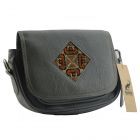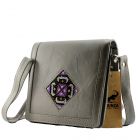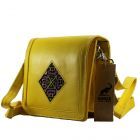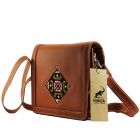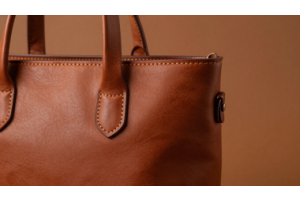How to Be an Eco-Conscious Shopper

How to Be an Eco-Conscious Shopper
Being an eco-conscious shopper isn’t about perfection — it’s about making smarter, more thoughtful choices every day. From what we buy to how we use and dispose of it, every decision can make a difference. By choosing sustainable materials, supporting ethical brands, and reducing waste, you’re not only protecting the planet but also promoting a more mindful way of living. This guide will help you understand how to shop responsibly, save money, and make eco-friendly habits a natural part of your lifestyle.
- 1. Introduction – How to Be an Eco-Conscious Shopper
- 2. Understanding Eco-Conscious Shopping
- 3. Choosing Sustainable and Ethical Brands
- 4. Identifying Eco-Friendly Materials
- 5. Reducing Waste and Overconsumption
- 6. The Power of Second-Hand and Upcycled Products
- 7. Conclusion – Small Steps Toward a Greener Future
- 8. FAQs
1. Introduction – How to Be an Eco-Conscious Shopper
Being an eco-conscious shopper means more than just buying “green” products — it’s about understanding how your choices impact the planet. Every purchase, from a simple tote bag to your weekly groceries, has a footprint. By making small, thoughtful decisions, you can reduce waste, support ethical brands, and promote a more sustainable lifestyle. It’s not about being perfect — it’s about progress. Learning to shop consciously helps protect natural resources, reduces pollution, and encourages companies to do better. In this guide, we’ll explore simple, practical ways to make eco-friendly shopping part of your everyday life.
- Introduction – How to Be an Eco-Conscious Shopper
- Being an eco-conscious shopper means making thoughtful choices that respect the planet and the people who create the products we buy.
- It’s about asking simple but powerful questions like where was this made, who made it, and what materials were used. Every answer brings you closer to sustainable living.
- Eco-conscious shopping isn’t about being perfect; it’s about progress. Small habits like reusing bags, choosing durable products, and supporting ethical brands can create a big difference over time.
- When you buy less but choose better, you promote quality over quantity and help reduce waste while protecting the environment.
- This guide will walk you through easy, practical steps to make mindful shopping part of your everyday lifestyle, helping you live more sustainably while still enjoying the things you love.
1. What It Means
Being an eco-conscious shopper means choosing products and brands that respect the planet. It’s about knowing where things come from, how they’re made, and what happens after you use them.
2. Why It Matters
Every purchase we make has an environmental impact — from packaging waste to carbon emissions. By shopping responsibly, we help reduce pollution, conserve resources, and support ethical business practices.
3. It’s Not About Perfection
You don’t need to change everything overnight. Even small, consistent choices — like using reusable bags or buying sustainable materials — make a real difference.
4. The Goal
The aim is to shop smarter, not harder. Make informed decisions, support eco-friendly brands, and create habits that benefit both you and the environment.
Tip
Being an eco-conscious shopper is all about making mindful choices that reduce harm to the planet. It’s not about perfection, but progress — choosing quality over quantity, supporting ethical brands, and understanding how each purchase impacts the environment. From buying sustainably sourced materials to reusing and recycling whenever possible, every small action adds up. When you shop with awareness, you’re not just getting what you need — you’re helping protect the Earth for future generations while promoting a lifestyle that values responsibility and balance.
2. Understanding Eco-Conscious Shopping
Eco-conscious shopping is all about making thoughtful choices that minimize harm to the planet. It means understanding how products are made, where they come from, and what impact they have on the environment. Instead of buying on impulse, eco-conscious shoppers look for sustainably sourced, ethically produced, and long-lasting items. This mindful approach helps reduce waste, lower carbon footprints, and encourage brands to adopt greener, more responsible practices. In simple terms, it’s about aligning your shopping habits with your values — caring for both people and the planet.
1. What It’s All About
Eco-conscious shopping is about buying with awareness — knowing how a product is made, where it comes from, and its impact on the environment. It’s a mindful approach to consumption that focuses on sustainability over convenience.
2. The Bigger Picture
Every stage of a product’s life — from production to disposal — affects the planet. Eco-conscious shopping means choosing items that are ethically produced, sustainably sourced, and designed to last longer.
3. Making Informed Choices
It’s not just about choosing “eco” labels. It’s about reading product details, researching brands, and understanding materials. Small actions like avoiding single-use plastics or supporting fair-trade goods can create meaningful change.
4. Why It Matters
When more people shop consciously, companies are pushed to adopt greener practices. Your purchase becomes a vote for a cleaner, fairer, and more sustainable world.
3. Choosing Sustainable and Ethical Brands
Choosing sustainable and ethical brands means supporting companies that prioritize the planet, people, and long-term well-being over profit. These brands are transparent about their sourcing, use eco-friendly materials, ensure fair labor practices, and focus on reducing waste throughout production. Every purchase you make from such brands becomes a small step toward positive change — lowering your environmental impact and encouraging others to follow suit. By identifying certified, honest, and responsible businesses, you’re not just shopping; you’re shaping a more sustainable and fair future for everyone.
1. What It Means
Choosing sustainable and ethical brands means aligning your shopping habits with your values. These brands go beyond profits — they care about the planet, the people who make their products, and the long-term impact of their business. They prioritize eco-friendly materials, cruelty-free processes, and responsible manufacturing.
2. Why It’s Important
Every time you make a purchase, you cast a vote for the kind of world you want to live in. Supporting sustainable and ethical brands helps reduce environmental damage, promote fair wages, and ensure safe working conditions. It’s one of the most effective ways to push the fashion, beauty, and retail industries toward cleaner, more transparent practices.
3. How to Identify Ethical Brands
Look for certifications like Fair Trade, B Corp, or GOTS (Global Organic Textile Standard). Check if the company shares information about its sourcing, production, and sustainability goals. Honest brands are open about their process — they don’t hide behind vague claims.
4. Smart Tip
Start small. Replace one everyday product — like your bag, skincare, or clothing — with a sustainable option. Over time, these mindful swaps create a lasting impact on both your lifestyle and the planet.
5.The Long-Term Goal
The ultimate goal isn’t to buy more “green” things — it’s to buy less but better. Supporting ethical brands means choosing quality over quantity and embracing timeless, durable products that last. That’s how real sustainability begins — with intention and awareness.
6.Small Changes, Big Difference
You don’t have to overhaul your entire wardrobe or lifestyle overnight. Start by swapping one or two everyday items — like choosing a sustainably made leather handbag or eco-certified skincare product. Each mindful purchase adds up and helps shape a greener, fairer marketplace.
4.Identifying Eco-Friendly Materials
Identifying eco-friendly materials is key to becoming a truly conscious shopper. Sustainable materials are made with minimal environmental impact — they come from renewable, organic, or recycled sources and are designed to last. Look for fabrics like organic cotton, hemp, bamboo, or linen, which use fewer chemicals and water. In leather goods, opt for vegetable-tanned or recycled leather over chemically treated ones. For packaging, choose items that use biodegradable or recyclable materials instead of plastic. By understanding what your products are made of, you can make smarter, planet-friendly choices that reduce waste and promote sustainability at every step.
1. What It Means
Identifying eco-friendly materials is about understanding what your products are made of — and how those materials impact the planet. Sustainable materials are created using methods that minimize pollution, conserve natural resources, and reduce waste. Choosing the right fabrics, fibers, and components can significantly lower your carbon footprint.
2. Why It Matters
Many everyday products — from clothing to accessories — are made using materials that harm the environment. Synthetic fabrics like polyester or nylon release microplastics, while traditional leather and cotton can involve toxic chemicals or heavy water usage. By choosing eco-friendly materials, you’re actively reducing pollution and supporting more responsible production systems.
3. Common Eco-Friendly Materials
- Organic Cotton – Grown without pesticides or synthetic fertilizers, using less water.
- Hemp – Naturally pest-resistant, fast-growing, and durable.
- Linen (Flax Fiber) – Biodegradable, lightweight, and made from minimal-resource crops.
- Recycled Fabrics – Made from repurposed materials like plastic bottles or textile waste.
- Cork & Bamboo – Renewable, biodegradable, and harvested without harming the plant.
- Ethically Sourced Wool & Leather – Obtained from responsible farms that prioritize animal welfare and sustainable land use.
4. Materials to Avoid
- Conventional Cotton – Uses high water and pesticide levels.
- Synthetic Fabrics (Polyester, Nylon, Acrylic) – Derived from petroleum and shed microplastics.
- PVC (Polyvinyl Chloride) – Common in accessories, but toxic to produce and non-biodegradable.
5. How to Verify Authenticity
- GOTS (Global Organic Textile Standard) – For textiles.
- OEKO-TEX Standard 100 – Ensures products are free from harmful substances.
- Recycled Claim Standard (RCS) – For recycled content.
- Leather Working Group (LWG) – Certification for sustainable leather production.
6. Smart Shopping Tip
Before buying, check product tags or brand websites for material details. Choose items that are durable, biodegradable, and ethically sourced. Remember — quality lasts longer than quantity, and that’s what makes a purchase truly sustainable.
5. Reducing Waste and Overconsumption
Reducing waste and overconsumption is a core part of eco-conscious shopping, focusing on buying only what you truly need and making every purchase count. Overbuying not only fills our closets and homes with items we seldom use but also drives unnecessary production, which consumes resources, energy, and contributes to pollution. By prioritizing quality over quantity, choosing durable and reusable products, and avoiding single-use items, you can significantly cut down your environmental footprint. Simple habits like planning purchases, reusing and repairing items, and thoughtfully disposing of products help prevent waste from ending up in landfills and oceans. Embracing mindful consumption encourages a sustainable lifestyle where less becomes more — more impact, more savings, and more respect for the planet.
1. What It Means
Reducing waste and overconsumption is about buying only what you truly need and making choices that minimize environmental impact. It’s a mindset that values quality over quantity, durability over trends, and mindful use over mindless buying.
2. Why It Matters
Overconsumption drives pollution, landfill growth, and resource depletion. From fast fashion to single-use plastics, buying more than necessary contributes to climate change and ecological damage. By consuming less and smarter, you help conserve resources and reduce your carbon footprint.
3. Practical Strategies
- Plan Your Purchases – Make a list before shopping to avoid impulse buys.
- Invest in Quality – Choose items that last longer rather than cheap, disposable alternatives.
- Reuse and Repurpose – Find new uses for old products instead of throwing them away.
- Minimal Packaging – Opt for products with little or recyclable packaging.
- Digital Receipts & Statements – Reduce paper waste whenever possible.
4. Smart Habits
- Shop Less, Choose Better – Focus on what you really need and what will last.
- Repair Instead of Replace – Fix damaged items rather than discarding them.
- Borrow or Share – For items you rarely use, consider borrowing, renting, or sharing with others.
5. Long-Term Goal
The aim is to create a sustainable shopping routine that reduces unnecessary consumption and encourages mindful use of resources. Small, consistent steps in reducing waste contribute to a healthier planet and a simpler, more intentional lifestyle.
| Strategy | What It Means | Example |
|---|---|---|
| Buy Only What You Need | Focus on quality over quantity to avoid unnecessary purchases. | Choose one durable handbag instead of multiple cheap ones. |
| Choose Reusable Items | Replace disposable products with long-lasting alternatives. | Use a reusable water bottle, shopping bag, or lunch container. |
| Repurpose and Upcycle | Give new life to old products instead of throwing them away. | Turn old t-shirts into cleaning rags or tote bags. |
| Opt for Minimal Packaging | Reduce waste by selecting products with eco-friendly packaging. | Buy items in bulk or packaging made from recycled materials. |
| Repair Instead of Replace | Fix items to extend their lifespan rather than buying new ones. | Resole shoes, mend clothes, or repair handbags. |
6.The Power of Second-Hand and Upcycled Products
Second-hand and upcycled products are powerful tools for eco-conscious shopping because they give new life to items that might otherwise end up in landfills. Buying pre-loved clothing, accessories, or furniture reduces demand for new production, saving resources, energy, and reducing pollution. Upcycling — transforming old or discarded items into something useful or beautiful — not only minimizes waste but also sparks creativity and uniqueness in your style. These choices promote a circular economy, where products are used longer and waste is minimized, proving that sustainable shopping doesn’t mean compromising on quality, fashion, or functionality. By embracing second-hand and upcycled items, you contribute to a greener planet while enjoying distinctive, one-of-a-kind products.
- Reduce Waste – Buying second-hand or upcycled items keeps products out of landfills and reduces demand for new production.
- Save Resources – Less energy, water, and raw materials are used when items are reused or repurposed.
- Unique & Creative – Upcycled products are often one-of-a-kind, adding creativity and personality to your style or home.
- Support Circular Economy – Extends the life of products and encourages sustainable consumption patterns.
- Affordable & Sustainable – Second-hand items are often cheaper while still being high quality, making eco-friendly shopping accessible.
| Benefit | Description |
|---|---|
| Reduce Waste | Buying second-hand or upcycled items keeps products out of landfills and reduces demand for new production. |
| Save Resources | Less energy, water, and raw materials are used when items are reused or repurposed. |
| Unique & Creative | Upcycled products are often one-of-a-kind, adding creativity and personality to your style or home. |
| Support Circular Economy | Extends the life of products and encourages sustainable consumption patterns. |
| Affordable & Sustainable | Second-hand items are often cheaper while still being high quality, making eco-friendly shopping accessible. |
7.Conclusion – Small Steps Toward a Greener Future
Being an eco-conscious shopper doesn’t mean changing everything overnight — it’s about making thoughtful, informed choices that collectively make a difference. Small actions like choosing sustainable materials, supporting ethical brands, reducing waste, buying second-hand, and upcycling products all contribute to a healthier planet. Each decision, no matter how minor it seems, helps conserve resources, reduce pollution, and encourage responsible production. By adopting mindful shopping habits, you not only create a positive environmental impact but also inspire others to follow suit. Remember, sustainability is a journey — and every small step you take moves us closer to a greener, cleaner, and more responsible future.
FAQs
1. What does it mean to be an eco-conscious shopper?
Being an eco-conscious shopper means making mindful choices that reduce environmental impact, support ethical brands, and encourage sustainable consumption.
2. Why is eco-conscious shopping important?
It helps conserve natural resources, minimize waste, reduce pollution, and promotes responsible business practices. Every purchase matters.
3. How can I identify sustainable and ethical brands?
Look for transparency in sourcing, fair labor practices, eco-friendly materials, and certifications like Fair Trade, GOTS, or B Corp.
4. What are some eco-friendly materials I should choose?
Organic cotton, hemp, linen, recycled fabrics, cork, bamboo, and ethically sourced wool or leather are all sustainable options.
5. Which materials should I avoid?
Avoid conventional cotton, synthetic fabrics like polyester and nylon, and PVC, as they are resource-intensive or non-biodegradable.
6. How can I reduce waste while shopping?
Buy only what you need, choose durable products, reuse or repair items, and avoid single-use plastics or disposable products.
7. What is the benefit of buying second-hand or upcycled products?
Second-hand and upcycled items reduce landfill waste, save resources, and often provide unique, high-quality alternatives at lower costs.
8. How do certifications help in eco-conscious shopping?
Certifications like GOTS, OEKO-TEX, RCS, or LWG verify that products meet environmental and ethical standards, helping you make informed choices.
9. Can small changes in shopping habits really make a difference?
Yes! Even small, consistent actions — like choosing reusable bags, eco-friendly fabrics, or sustainable brands — collectively create a significant positive impact on the environment.
10. How do I start my journey as an eco-conscious shopper?
Start by evaluating your current purchases, swapping a few items for sustainable alternatives, supporting ethical brands, and gradually adopting mindful consumption habits.

